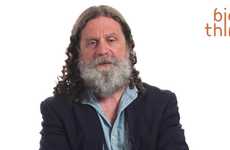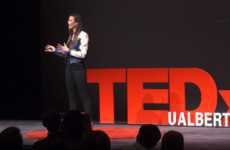
Need Inspiration?
Get inspired by 4,000+ keynote speaker videos & our founder, a top keynote speaker on innovation.
Rébecca Kleinberger's Talk on Vocal Structures Reveals Surprising Info
Kalin Ned — May 11, 2018 — Keynote Trends
References: rebeccakleinberger & ted
Rébecca Kleinberger delivers a largely informative talk on vocal structures that considers the perception of our own voices. The individual is a voice expert and a researcher from the Opera of the Future Group at the MIT Media Lab. She is focused on learning about the voice, what roles it plays in the context of society and for the individual.
With a holistic approach to experimentation, Rébecca Kleinberger aims to help people understand and develop healthier relationships with themselves. She outlines the importance of this human trait on the level of the species, as well as on the level of personal, interpersonal and social development.
Her TED talk on vocal structures begins with a basic scientific outline of the biological mechanism of sound-creation -- it requires the synchronization of more than 100 muscles in the body. Rébecca Kleinberger shares that listening to the variation in voice representation can identify possible diseases, fluctuation in hormone levels and even inform about personal relationships.
During her talk on vocal structures, the academic relates a helpful way of understanding the types of voice we actually have. She calls it the 'Mask.' We perceive three types of sounds when we hear our own voice -- the outward (the front of the mask) which travels through air, the inward (the interior of the mask) which travels through our bones and the inner which is the voice that has no physical manifestation.
With a holistic approach to experimentation, Rébecca Kleinberger aims to help people understand and develop healthier relationships with themselves. She outlines the importance of this human trait on the level of the species, as well as on the level of personal, interpersonal and social development.
Her TED talk on vocal structures begins with a basic scientific outline of the biological mechanism of sound-creation -- it requires the synchronization of more than 100 muscles in the body. Rébecca Kleinberger shares that listening to the variation in voice representation can identify possible diseases, fluctuation in hormone levels and even inform about personal relationships.
During her talk on vocal structures, the academic relates a helpful way of understanding the types of voice we actually have. She calls it the 'Mask.' We perceive three types of sounds when we hear our own voice -- the outward (the front of the mask) which travels through air, the inward (the interior of the mask) which travels through our bones and the inner which is the voice that has no physical manifestation.
4.7
Score
Popularity
Activity
Freshness
















